Luis-Miguel Gomez-Osorio, DVM, MSc, PhD
Region Technical Manager LATAM, PatentCo-Agromed
Mycotoxins are toxic compounds produced by certain types of fungi, particularly those belonging to the genera Aspergillus, Penicillium and Fusarium.
![]() These toxins can contaminate agricultural products and pose significant health risks to both humans and animals.
These toxins can contaminate agricultural products and pose significant health risks to both humans and animals.
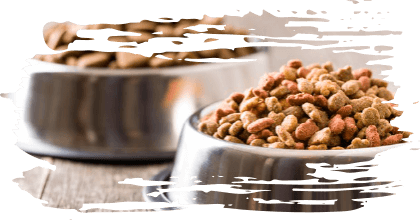
SOURCES AND TYPES OF MYCOTOXINS
Mycotoxins can contaminate pet food ingredients at various stages, from crop production to storage.
- ⇰ Common sources of contamination include grains such as corn, wheat, and rice, which are staple ingredients in many pet foods.
- ⇰ The primary mycotoxins of concern in pet food include aflatoxins, ochratoxins, fumonisin, zearalenone, and trichothecenes.
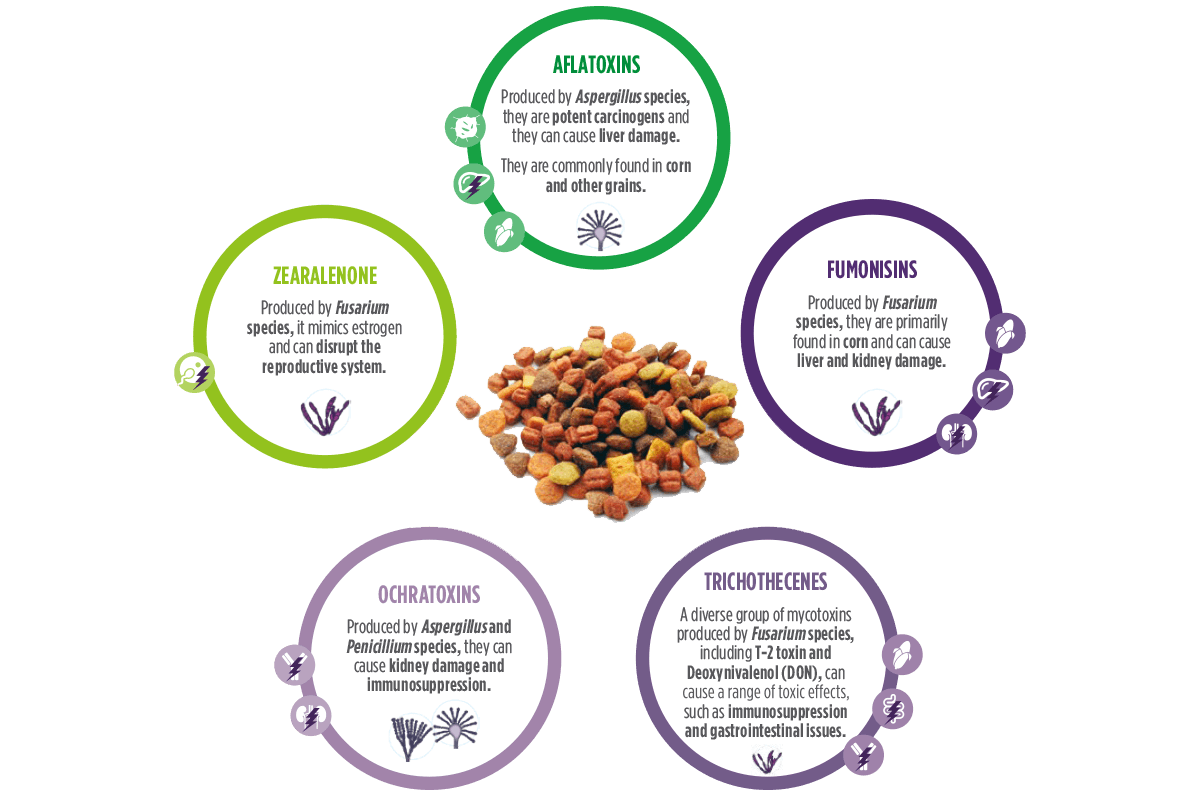
HEALTH IMPACTS ON PETS
Pets, particularly dogs and cats, are at risk of mycotoxin exposure through contaminated food.
The effects of mycotoxin ingestion can vary depending on:
 The type of mycotoxin.
The type of mycotoxin. The level of exposure.
The level of exposure. The pet’s size, age, and overall health.
The pet’s size, age, and overall health.
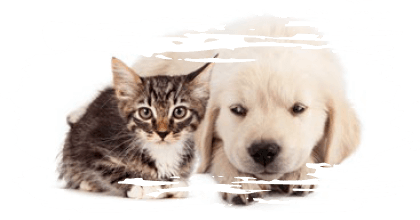
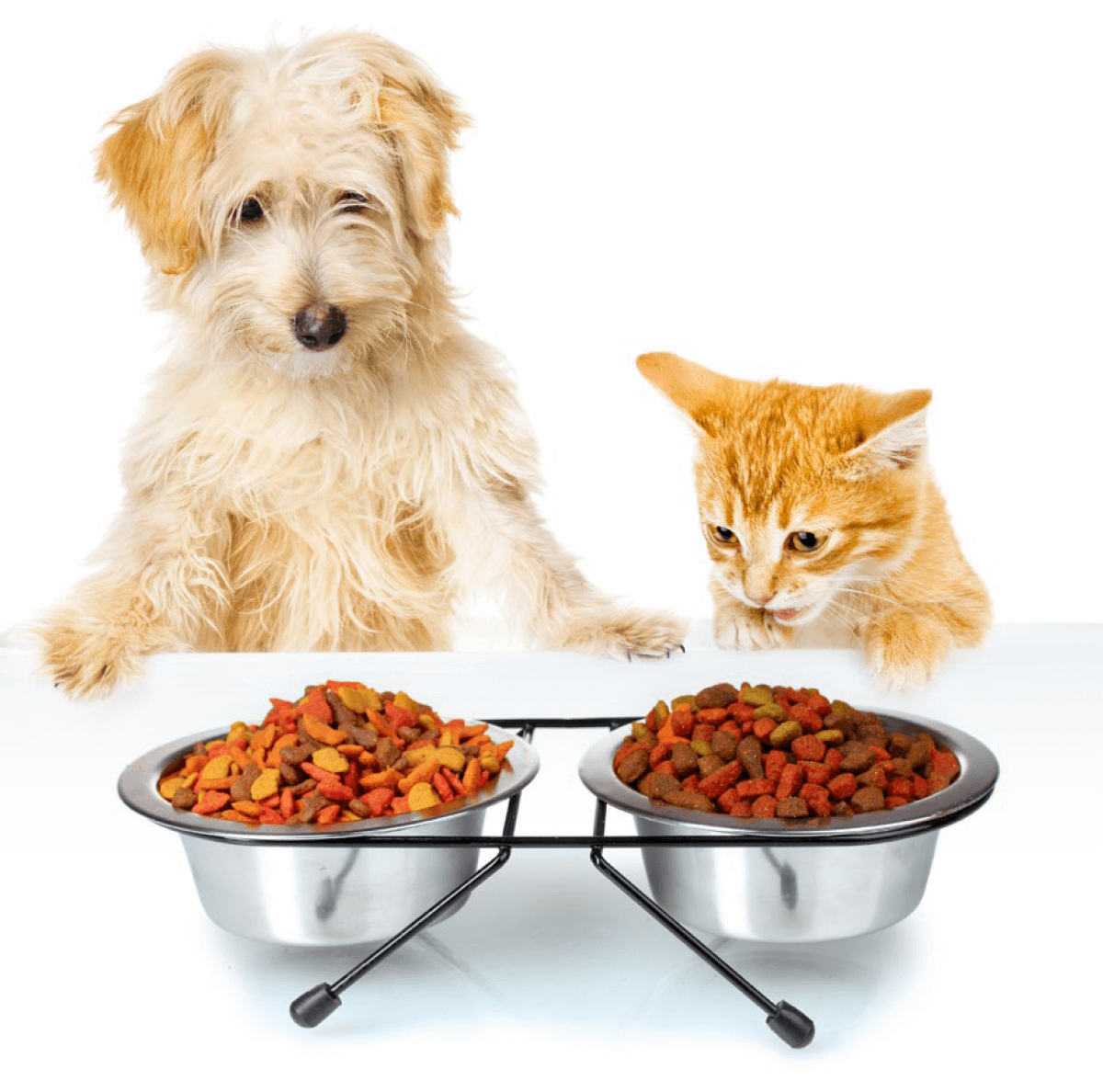
ACUTE TOXICITY
High levels of mycotoxin exposure can lead to acute poisoning, characterized by signs such as:
 Vomiting
Vomiting
 Diarrhea
Diarrhea
 Abdominal pain
Abdominal pain
 Lethargy
Lethargy
 Seizures
Seizures
En casos graves, la intoxicación aguda por micotoxinas puede ser mortal.
CHRONIC TOXICITY
Long-term exposure to lower levels of mycotoxins can result in chronic health issues, including:
 Liver and kidney damage
Liver and kidney damage Weakened immune function
Weakened immune function Reproductive problems
Reproductive problems Increased cancer risk
Increased cancer risk

DETECTION AND REGULATION
Detecting mycotoxins in pet food involves sophisticated analytical techniques such as Liquid Chromatography with tandem mass spectrometry (LC-MS/MS) and enzyme-linked immunosorbent assay (ELISA).
⇰ These methods can identify and quantify mycotoxins at very low concentrations.
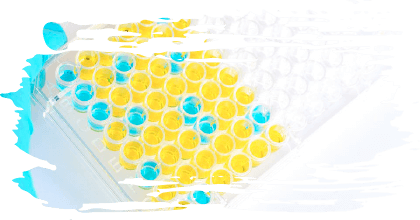
PREVENTION AND MITIGATION STRATEGIES
To reduce the risk of mycotoxin contamination in pet food, manufacturers can implement several strategies:
- ✔ Quality Control: rigorous testing of raw ingredients and finished products for mycotoxin contamination.
- ✔ Storage Conditions: proper storage of ingredients and finished products to prevent fungal growth.
- ✔ Use of mycotoxin binders: incorporating mycotoxin binders, such as clay minerals and activated charcoal, into pet food formulations to reduce mycotoxin bioavailability.
CONCLUSION ![]()
The presence of mycotoxins in pet food is a serious concern that requires ongoing attention from manufacturers, regulators, and pet owners.
By understanding the sources and types of mycotoxins, their health impacts, and the methods for detection and prevention, stakeholders can work together to ensure the safety and well-being of pets.
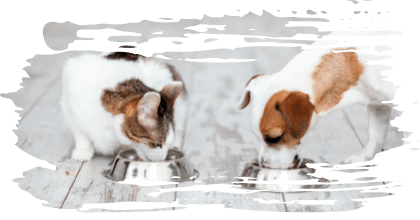
REFERENCES
1. Bennett, J. W., & Klich, M. (2003). Mycotoxins. Clinical Microbiology Reviews, 16(3), 497–516. doi:10.1128/CMR.16.3.497-516.2003
2. Richard, J. L. (2007). Some major mycotoxins and their mycotoxicoses—an overview. International Journal of Food Microbiology, 119(1-2), 3–10. doi:10.1016/j.ijfoodmicro.2007.07.019
3. European Food Safety Authority (EFSA). (2004). Opinion of the Scientific Panel on Contaminants in the Food Chain on a request from the Commission related to ochratoxin A (OTA) as undesirable substance in animal feed. EFSA Journal, 2(3), 101. doi:10.2903/j.efsa.2004.101
4. U.S. Food and Drug Administration (FDA). (2020). Mycotoxins in Pet Food. Retrieved from https://www.fda.gov/animal-veterinary/animal-health-literacy/mycotoxins-pet-food
5. Grandi et al. (2019). Ocurrence of mycotoxins in extruded commercial cat food. ACS Omega, 4, 1404-14012.




 Micotoxicosis prevention
Micotoxicosis prevention